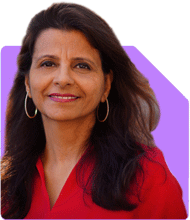Hi, I am 45 year old male and my wife is a homemaker. Kids in 9th(girl), 3rd(boy). I hold 15L(up from 8L) in Indian stocks since 2021, 1.05CR in FDs, 30L(down from 60L) in USA stocks(holding bags :) ) 50L(up by 20% only) in US exchange fund since 3 years, 17L in EPF, 15L in LIC jeevan Umang table-845(I am planning to covert it to PAID UP policy). I don't have a house other than a couple of investment plots in Hyderabad outskirts.
I lost my job 6 months back. Before getting into the next job, I wanted to plan for financial independent. My current expenses are Rs 70,000(excluding the kids fees etc.,).
Please suggest a moderate to aggressive plan including stocks, mutual funds and other alternatives. I have taken big risks previously by investing in turn around stocks.
Thank you.
Madhu Sudhan
Ans: Madhu Sudhan. Your existing portfolio reflects commendable efforts, and with some fine-tuning, we can structure a robust plan to meet your goals for financial independence. Below is a comprehensive roadmap covering liquidity, long-term growth, asset diversification, and other insights.
1. Emergency Fund and High Liquidity Options
Since you are between jobs, having an emergency fund is essential. This can cover immediate needs and reduce pressure on long-term assets.
Emergency Buffer: Set aside six months of expenses, approximately Rs. 4-5 lakh, in high-liquidity instruments. A liquid mutual fund or a short-term debt fund can offer flexibility, better returns than savings accounts, and immediate access.
FD Reassessment: You currently hold Rs. 1.05 crore in fixed deposits (FDs). Consider moving part of this to a liquid fund to increase your returns and maintain easy access. However, leave enough in FD to cover any immediate financial needs, as it is secure.
2. Restructuring Existing Stock Portfolio
Your stock portfolio reflects considerable growth, and it's commendable you took calculated risks. However, a strategic shift may be needed now to enhance stability and returns.
Indian Stock Portfolio (Rs. 15 lakh): Review your holdings and consider reallocating underperforming stocks. Focus on companies with consistent dividends, solid fundamentals, and proven growth. A diversified portfolio across sectors can reduce market risk.
US Stock Holdings (Rs. 30 lakh) and Exchange-Traded Fund (Rs. 50 lakh): Given the decline, assess the prospects of each holding. For long-term growth, consider switching underperforming assets to Indian equities. The Indian market currently offers good growth potential, and switching some funds to a diversified, professionally managed, actively managed mutual fund could be beneficial. Actively managed funds bring in expertise and could enhance portfolio stability, unlike passive index funds, which may not be suitable during downturns.
3. Mutual Fund Allocation for Stability and Growth
A balanced mix of mutual funds with a moderate-to-aggressive approach can serve as the foundation of your wealth-building plan.
Growth-Oriented Equity Funds: Channel Rs. 20-25 lakh into equity mutual funds for steady growth. Actively managed funds with a blend of large-cap and mid-cap stocks provide both stability and growth potential. Actively managed funds outperform passive funds by leveraging expert insights and sector analysis, helping you avoid risks associated with market volatility.
Flexi-Cap Funds: Flexi-cap funds offer the flexibility to adjust between small, mid, and large caps as per market conditions. Such funds allow fund managers to adapt the investment based on market opportunities, ensuring consistent growth with controlled risk. Invest a portion of your funds in these for long-term growth.
Balanced Advantage Funds: Allocate Rs. 15-20 lakh to balanced advantage funds. These funds switch between equity and debt based on market conditions. They can protect against market downturns while still aiming for growth. Balanced funds give more control and a blend of safety and returns, unlike direct stock investments which carry higher market risks.
4. Diversifying with Debt and Fixed Income Investments
While equity is essential for growth, debt provides safety and consistent income, which is particularly useful given your life stage.
Debt Mutual Funds: To diversify, consider debt mutual funds with medium-term durations. These funds offer better returns than traditional savings and FDs, are tax-efficient, and add stability to your portfolio. Be mindful of mutual fund taxation: Long-term capital gains on debt funds are taxed as per your tax slab. Short-term capital gains (held under 3 years) will also be as per your tax slab.
Public Provident Fund (PPF) and EPF: Your EPF balance of Rs. 17 lakh serves as a stable retirement corpus. You can consider a PPF for further tax-saving benefits and a stable return, but limit it to avoid excessive exposure in low-return instruments.
5. Insurance Portfolio Optimisation
Insurance can often get overlooked, but it’s essential for financial security, especially as the primary earner.
LIC Policy (Jeevan Umang): Since you are planning to make your LIC Jeevan Umang policy paid up, ensure it aligns with your cash flow needs. However, if the policy’s premium seems excessive for its returns, a conversion is wise.
Health Insurance: With no employer-backed health cover, consider adding a personal health insurance policy. Medical costs are rising, and a comprehensive policy for you and your family will provide peace of mind.
6. Exploring Alternatives Beyond Traditional Investments
Diversifying into alternatives can enhance returns and offer stability over the long term. Some moderate alternatives can include:
Gold Bonds (Sovereign Gold Bonds): Gold holds value over time and provides inflation protection. Allocate around Rs. 10-15 lakh in sovereign gold bonds, which are government-backed and provide interest, along with capital appreciation.
REITs (Real Estate Investment Trusts): Since you already have some real estate exposure, REITs provide a way to gain returns from commercial real estate without physical property management. They offer returns through dividends and capital appreciation. Consider investing Rs. 5-10 lakh here for a moderate risk level and steady income.
7. Planning for Your Children’s Higher Education
With two children in school, it’s wise to start allocating funds for their higher education.
Equity Mutual Funds for Education: Set aside a portion in equity mutual funds, specifically targeting education needs. Equity funds can grow significantly over time, and the compounding effect will work in your favour.
SIP-Based Investment: Start SIPs in high-growth mutual funds with a target to build a corpus for each child. The SIP approach ensures disciplined investment, and you can gradually increase the amount to meet future expenses for education.
8. Retirement Planning with a Focus on Financial Independence
Achieving financial independence is your priority, and it’s achievable with a well-diversified portfolio.
Systematic Withdrawal Plan (SWP) for Cash Flow: Once your portfolio matures, an SWP from mutual funds can supplement income without touching principal amounts. The SWP approach is tax-efficient and provides consistent cash flow in retirement.
Rethinking Fixed Deposits: FDs are safe but tend to offer lower returns. For income, consider shifting FDs partially to a balanced or debt mutual fund. These offer better returns and moderate risk, keeping the income flow steady.
Final Insights
A diversified portfolio with a mix of equities, debt, and alternative assets will build stability and growth. An aggressive approach on stocks is useful, but it should balance with stable instruments to protect against losses. Keep reviewing and aligning your portfolio with your evolving goals and risk appetite.
Lastly, don’t hesitate to consult a Certified Financial Planner. They can offer tailored advice based on the latest insights. This structured approach will place you on a path to financial independence.
Best Regards,
K. Ramalingam, MBA, CFP,
Chief Financial Planner,
www.holisticinvestment.in
https://www.youtube.com/@HolisticInvestment
.jpg)






















